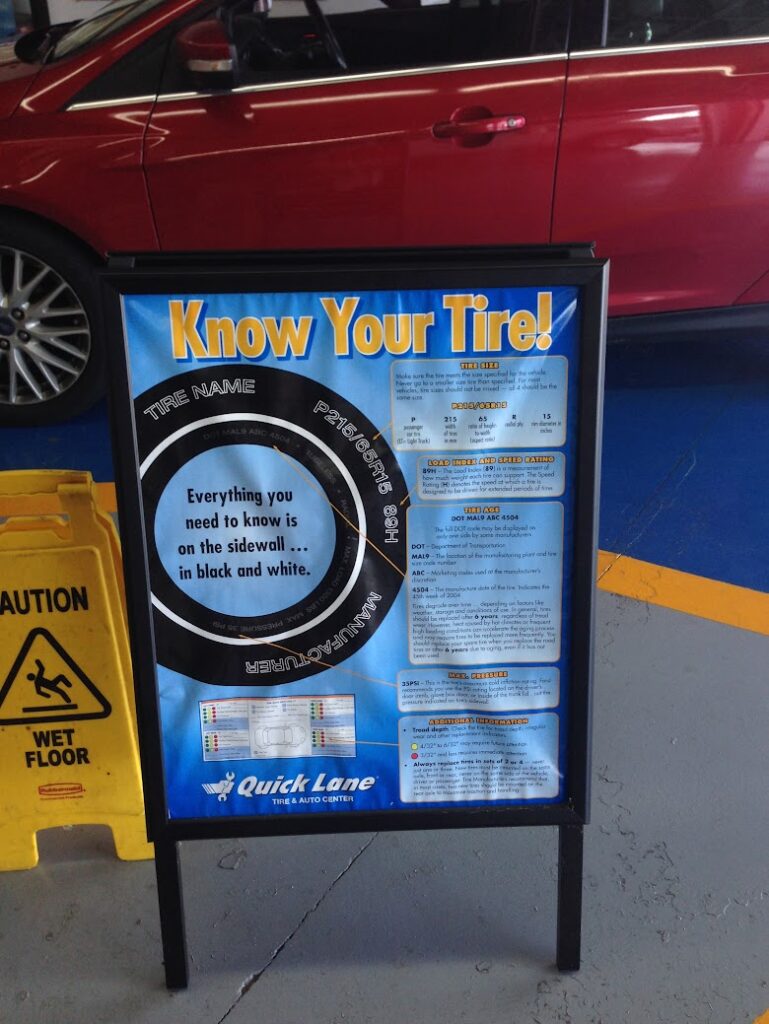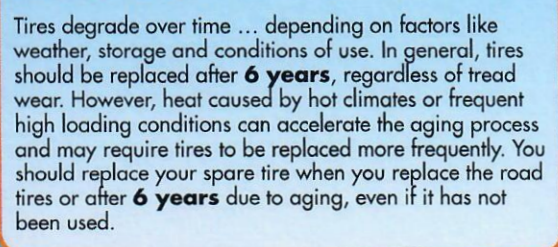Tire Failure Case Study: The Importance of Visuals
Posted by Wetherington Law Firm | Defective Vehicles
- Articles
- Artificial Intelligence
- Car Accidents
- Class Action Lawsuit
- Comparative Negligence
- Crime Victim
- Defective Vehicles
- Disability
- Kratom Death and Injury
- Legal Marketing
- Motor Vehicle Accidents
- News/Media
- Other
- Pedestrian Accidents
- Personal Injury
- Results
- Sexual Assault
- Truck Accidents
- Uber
- Wrongful Death
Categories

by: Matt Wetherington
May 12, 2023
How We Used a Visual Timeline to Settle a Wrongful Death Case
This case study highlights how we utilized the free online platform Time Graphics to provide a clear, chronological representation of our client’s multiple interactions with a dealership, the significant events in the life of a tire, and how the dealership’s failure to address the issue led to a catastrophic accident. Skip the case study and jump to the timeline.
Most drivers are acutely aware of the need for regular maintenance, routine oil changes, and timely brake pad replacements. However, there’s one aspect of vehicle safety that is widely overlooked and can potentially lead to catastrophic failures: tire aging. Tires don’t just wear down; they age. Even if they aren’t being used, they degrade over time due to a chemical process called oxidation. This process causes the once flexible components of a tire to harden and become brittle, leading to a higher risk of dangerous failures, particularly tread separations.
The average lifespan of a tire, according to numerous studies supported by the National Highway Traffic Safety Administration, is six years from the date of manufacture. However, this key detail is hidden in a cryptic 11-digit D.O.T. code imprinted on the side of the tire, a code that a mere 4% of consumers are aware of. This makes tire aging a hidden hazard.
The Root of the Problem: Tire Manufacturers
You might wonder why tire manufacturers aren’t doing more to educate consumers about tire aging. The unfortunate truth is that most consumers either do not know that this code exists or do not understand its significance. The warnings issued by auto manufacturers are usually found within the owner’s manual of newer model vehicles. But due to the cryptic code tire manufacturers use on tires, these warnings are of limited use to consumers.
Moreover, these warnings are not retroactively provided to owners of older model vehicles, which are more likely to have aged or expired tires. This failure on the part of tire manufacturers to adequately educate and warn consumers is a significant factor contributing to the ongoing risk of tire aging.
The Last Opportunity for Safety: Tire Shops
With the gap left by tire manufacturers, dealerships are perfectly positioned to step up and assume the responsibility of educating and warning consumers about this hidden hazard. They interact directly with consumers, conduct routine tire inspections, and provide services. In fact, many dealerships affirmatively advertise that they will inspect all of your tires and warn you if they are dangerously old.


However, as demonstrated in our case, even these experts routinely fail in their duty to adequately inform consumers. This highlights the urgent need for more rigorous training and accountability measures in the industry.
The Power of Timeline Graphics in Litigation
In our case, we utilized Time Graphics, a powerful timeline creation tool, to its full potential. We were able to visually depict the various points at which the dealerships could have warned our client about the potential hazard. By doing so, we highlighted a pattern of missed opportunities, each representing a ticking time bomb that was left unchecked.
Critical Service Life Events
Our timeline began with the purchase of the truck in November 2004, followed by multiple service visits over the years. Notably, a tire aging statement was not included in the owner’s manual for our vehicle. But, in May 2005, Ford published a six-year tire replacement standard. This set an industry benchmark that, unfortunately, the dealerships involved in our case failed to consistently follow.
By June 2011, the tire had been in service for six years. According to Ford’s standards, it was now due for replacement. However, despite several service visits, no action was taken. The situation became even more critical in June 2015 when the tire celebrated its ten-year anniversary. By this point, the tire was not just potentially hazardous, it was a ticking time bomb. Yet, even as the tire aged, the dealerships continued to ignore the escalating risk.
As the tire aged, the dealership’s culpability increased. The culminating event occurred in June 2020 when the tire was documented as a “05 model” during a 24-point inspection, yet there was no recommendation for its replacement.
The consequence was dire: a wreck occurred in October 2020 resulting in the death of our client’s father. The timeline visually underscored the tragic endpoint of a series of missed opportunities, negligence, and disregard for industry safety standards.
Impact on Settlement Negotiations and Trial
The timeline we created using Time Graphics was not only a powerful tool for us to understand and organize the sequence of events, but it also had a significant impact on the settlement negotiations. Rather than give a presentation at mediation (which I hate), I gave them access to the timeline. Doing so, let them digest the material at their convenience and to share it with adjusters and corporate decision makers.
The visual nature of the timeline meant that the information was easily digestible, making it more impactful than a verbal or written summary could be. The dealership was faced with a visual chronology of their repeated failures to act responsibly, which significantly strengthened our bargaining position. This was particularly effective because it transformed abstract dates and periods into concrete opportunities that were missed, making the dealership’s actions (or rather, inactions) all the more glaring.
If the case had gone to trial, the timeline would have served as a core exhibit. It could have been used during depositions to question witnesses about specific events or periods, and to establish the context for their testimonies. It would also have been an effective tool during the trial itself.
In opening statements, the timeline could have been used to provide the jury with a roadmap of the case, helping them understand the sequence of events and the key issues at stake. During the trial, it would have been referred to repeatedly, to emphasize certain points or to clarify complex information. As jurors began to rely on the document for context, it would have also become a source of “truth.”
In closing arguments, the “truth” in the timeline timeline could have been used to summarize the evidence and to reinforce the damages in a wrongful death. By highlighting the key life events that were missed, the timeline could have been used to create a powerful narrative of a tragedy that could and should have been prevented.
Timelines Are Awesome
In short, the timeline was not just a tool for our own understanding and organization. It was a strategic weapon that could be used to convince others – whether they were on the other side of a negotiation table or sitting in a jury box. The timeline was an effective way to present our case, and it undoubtedly played a crucial role in our successful settlement. Here is the link again: time.graphics
If you like this article, join the Business of Law Facebook Group where similar content is created and shared.
If you like money and want to help make the world a better place, join our referral network.
Click the “full screen” icon within the timeline for the full effect. Each item can be clicked for additional context, photos, documents, etc.
Making Your Own Timeline is Easy
Here’s a step-by-step guide on how to create a timeline with Time Graphics:
-
Start by creating a timeline: Go to the Time Graphics website and click on the ‘Create’ button. This will take you to a new screen where you can start creating your timeline.
-
Navigate through the timeline: You can click and drag to move through time. A line will appear over your cursor, showing the month and year that you’re currently viewing.
-
Add events: To add an event, left-click on the date where you want the event to occur. A wheel with various options will appear. Click on the icon to the right of the top icon (the virus icon). This is the event option.
-
Create the event: A menu will pop up on the left of your screen. Here, you can add a name to your event, which will be displayed on the timeline, and a description, which users can read by clicking on the event. You can also modify the date in the ‘Date(from)’ field to specify when the event occurred. Leave the ‘end’ part of the date field blank if you’re only adding a single event, not a time period.
-
Add tags and colors: You can add tags to your events to allow users to filter and find relevant events more easily. You can also change the color of the event and the text color to make your timeline visually engaging.
-
Add multimedia: Click on the camera or video icon at the top of the screen to add images or videos to your event. You can add as many as you want, making your timeline more engaging and informative.
-
Save your timeline: Once you’re satisfied with your timeline, remember to save it. You can then share it, embed it in a website, or present it in a courtroom or negotiation.